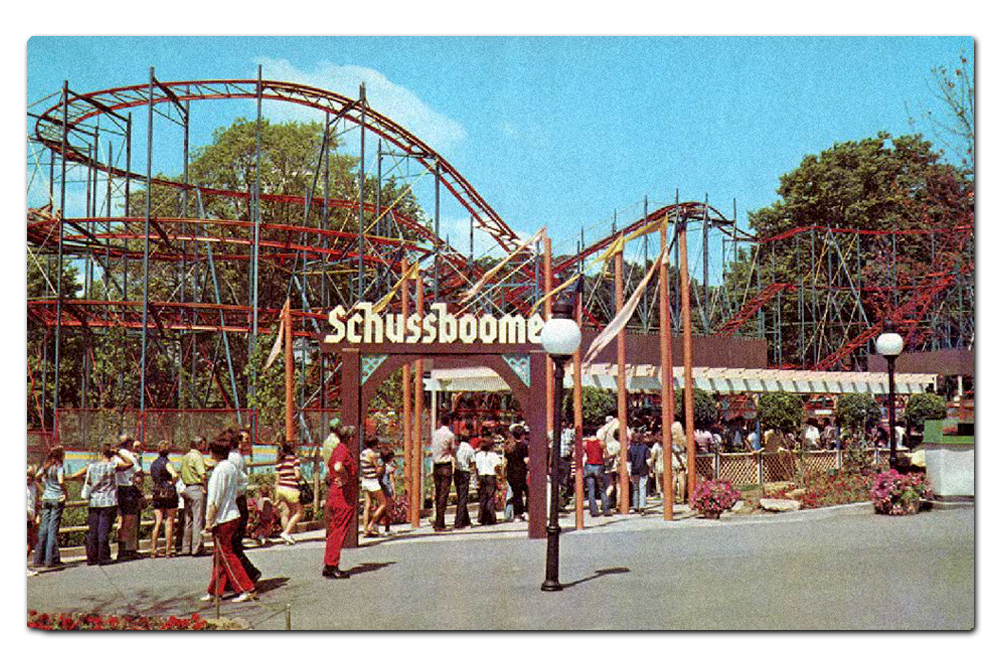Our (Old) Town.
When I embark on these kinds of road trips to themed venues, it’s mostly planned out. But sometimes serendipity comes calling, like the Welcome to Iowa stateline casino complex I stumbled upon while on my way down to Missouri. Here’s another such treasure: the Old Town Museum in Burlington, Colorado.
I was zipping along on I-70 on my way to Denver after having spent the day prior driving through Kansas when I found Burlington, which is the first town after crossing the state line. It’s a pretty small place, about 4,000 people. The city’s official website is boosterism at its finest, proclaiming in a cheerful voice you can almost taste:
With 256 days of sunshine, the City of Burlington is one of Colorado’s best-kept secrets. You can find us just off Interstate 70 near the Colorado/Kansas border. Burlington is a full service city located approximately 170 miles from the Denver-Metro area. Make plans to come for the day but don’t worry, we’re prepared for you to spend the night!
I decided to pull off at the town’s official Colorado Welcome Center just to rest and stretch a minute. Unlike Iowa’s barns-within-barns, this center didn’t feature any noteworthy design. But—rather wisely—the Old Town Museum is practically next door, and their parking lots connect. I could spy some Old West looking buildings from my truck. What was this?
The main building of the museum is pretty standard fare; these types of small town attractions are all over the country. After paying a small fee ($8), there are some interpretive panels about the history of the area (mostly agricultural) to take in before grabbing a map and wandering around the complex.
The town of Burlington proclaims that the museum is “more than just a barn” and they’re not wrong. Unfortunately, the buildings here lack any interpretation, so you can’t really make sense of what you’re looking at.
Like many of these “Old Town” presentations, there appears to be a mix of relocated, restored, rebuilt, and ‘new for old’ structures. And just like other historic downtowns throughout the West which I’ve documented, it’s all scrambled.
It’s a quiet Wednesday morning, and there’s only a couple other people here.
On Saturdays throughout the summer, there’s more activity. And on the fourth Saturday of each month, there’s a “Wild West Dinner Theater” show. I’d imagine some upright piano music and a ‘high noon’ type shootout between an outlaw and a sheriff. The script sort of writes itself.
Decontextualized like this, the little houses and other buildings are like graves. This is an architectural graveyard.
Down the center is a single Main Street block which has been assembled, again, from structures that have been moved or otherwise rebuilt. They do not appear to have any relationship to each other. I’m guessing this is the block where the shootout is staged on those Saturday dinner nights.
A couple of these buildings are really, really new. Or at least, appear to be.
The paint is fresh, the window glass is new. So, are they trying to go for historical recreation or more of a theme park aesthetic? At least the amalgamated spaces of Greenfield Village are clearly historical in origin, even if they’ve been brought together from disparate sites. And there is both organization and interpretation at play.
Part theme park, part museum, part graveyard. The place was odd.
Many of the walkup storefronts are so similar that they kind of wash over you after a while. Plenty of benches in the shade to sit in though.
If you’re familiar at all with the original classic Twilight Zone (1959–1964), that’s sort of the vibe with all these disconnected structures. Actually, it’s rather exactly the vibe.
There isn’t even any historical era to tie everything together. If it’s “old” it counts. This Texaco filling station shack is probably from the 1930s or 40s. The sign appears to be a contemporary replica.
Some nice lettering graphics in a few of the windows, though this is clearly very new printed and cut vinyl. The typefaces are probably from Letterhead Fonts which I have seen at nearly every theme park I’ve ever visited.
There are a couple samples of hand routed wood signage as well.
A few antique wagons and buggies are scattered about.
But the painted lettering appears to be fairly recent.
With some more interpretation, the Burlington Old Town Museum has the potential to be more substantial than it is. I realize it’s a small town non-profit that likely barely squeaks by, so I’m not judging it for that. I think what’s best illustrated here is that the cultural effects of thematic design and themed environments have compressed anything that’s perceived as “old” into a single pool of “pastness.” The Past becomes just another themed area, like Fantasyland.
It’s right in the name—”Old Town” becomes a kind of liminality, a Twilight Zone-like state that simply isn’t now (because there are no electricity, cars, or television), but clearly isn’t ancient times either. It’s just a Great American Pastness.
Perhaps the oddest part of the whole property is the themed façade on the opposite side of the main museum building, facing the Colorado Welcome Center’s parking lot. It appears to house a Colorado Workforce office, but an awful lot of detail was put into its construction.
In typical Disneyland fashion, it appears to be a grouping of five storefronts of different design, but in actuality it’s only one building. Each is a false front. Why this approach? Why the expense? The other side, the main museum entrance, doesn’t have this treatment at all. Maybe it was some developer’s idea to drive foot traffic. In any case, let’s hope the jobs they offer inside are real.
















